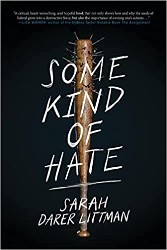Max Fischer, Leo Grunberg, and Elsa Bauer are inseparable friends living with their families in Vienna on the eve of World War II. When Leo’s father, a photographer, treats them to a ride on the famed Riesenrad Ferris wheel, the picture he takes of them becomes a sad reminder of the day as history unfolds. Their moment looking down over the city will be the peak – literally and figuratively – of their untroubled prewar existence.
Using parts of her own family’s history, Liz Kessler narrates the children’s story from their three different perspectives, taking them from 1938 until the Allies’ victory in 1945. Kessler presents both the perspective of the victims struggling to survive and the motivations of the perpetrators who choose to enable the Nazi regime. The novel displays a panoramic perspective across time, place, and memory.
Leo and Elsa are Jewish; they have never considered the fact that Max is non-Jewish to be an obstacle to their friendship. As punitive laws and increasing acts of violence begin to consume their community, both the Grunbergs and Bauers are emotionally unprepared. Kessler captures the seeming passivity and unwillingness to believe that their world has unalterably changed that was common to many of Europe’s Jews at the time. Yet both families mobilize themselves for survival, with the Bauers moving to still-unoccupied Czechoslovakia and the Grunbergs pursuing emigration to England for Leo and his mother.
Elsa and Leo’s chapters are narrated in the first person, but Max’s troubling evolution, from devoted friend to cruel adversary, is told from the relative distance of the third person. When Austrian schools are instructed to persecute, and eventually remove, Jewish students, Leo at first experiences his reversal of fate with incomprehension; called to the front of the classroom, along with his Jewish classmates, he wonders if the teacher is introducing a new game. Kessler reflects realistically the thought processes of children placed in irrational situations.
The novel’s trajectory – from a seemingly secure childhood in the cosmopolitan city of Vienna to exile abroad, confinement in ghettos, and internment in Auschwitz – conveys the rapid spiral of Jewish dehumanization. Kessler’s greatest challenge lies in the chronicling of Max’s response to the torments inflicted on his friends. The harsh, and eventually sadistic, treatment of Max by his father, becomes key to the reader’s empathy. Max is a child who, unlike his two Jewish friends, has never experienced the unconditional love of a parent. When his father willingly chooses total loyalty to a brutal regime, Max gradually comes to identify with Nazism and to justify every atrocity committed in its name.
The depth of this serious work offers readers a moving and accurate immersion in history. A list of further resources about the subject matter is included.
Emily Schneider writes about literature, feminism, and culture for Tablet, The Forward, The Horn Book, and other publications, and writes about children’s books on her blog. She has a Ph.D. in Romance Languages and Literatures.



